
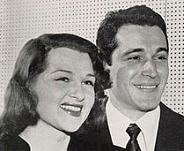


TLW's Classic Radio Showscope™ (Classic Radio Show Historyscope) |
By T.L. Winslow (TLW), the Historyscoper™ |
© Copyright by T.L. Winslow. All Rights Reserved. |
Original Pub. Date: Nov. 9, 2015. Last Update: May 25, 2019. |
Westerners are not only known as history ignoramuses, but double dumbass history ignoramuses when it comes to classic radio show history. Since I'm the one-and-only Historyscoper (tm), let me quickly bring you up to speed before you dive into my Master Historyscope.

In 1895 Italian Baron Guglielmo Marconi (1874-1937) invents radio telegraphy, with a contraption that can ring a bell a few yards away in his yard in Bologna; next year he travels to London to stir up interest. On June 2, 1896 Marconi receives the first patent for a communication system by means of electromagnetic waves (radio). In 1899 he wows the world by broadcasting the America's Cup race on wireless.
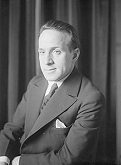
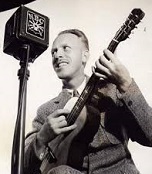
On Nov. 4, 1923
In 1924 the modern-day AM radio band (550-1550 KHz) is assigned in the U.S., with the U.S. govt. adopting the position that it owns the airwaves and has the power to allocate frequencies and coverage; 1.4K radio stations are broadcasting to 2.5M-3M radio sets in the U.S.
In 1927 the U.S. Radio Act of 1927 is passed, creating the Federal Radio Commission (FRC), which assumes responsibility for radio from the U.S. Dept. of Commerce, dividing the U.S. into five geographical zones, each with its own commissioner; too bad, next Mar. 28 the Davis Amendment is passed, requiring each zone to have equal allocations of licenses, time of operation, station power, and wavelength, giving the NE U.S. the same number of stations as the less populated W U.S.; on Feb. 25, 1928 Charles Jenkins Labs of Washington, D.C. becomes the first holder of a television license from the FRC; the act also creates the Equal Time Rule for political candidates.
Early in the 1930s vaudeville goes kaput, and by 1935 the Golden Age of Radio begins in the U.S. (ends 1950), with a few acts incl. Bob Hope, George Burns, and Gracie Allen making graceful transitions, while most vaudeville acts go kaput; Jack Benny (Benjamin Kubelsky) (1894-1974) debuts on the "Ed Sullivan Show" in 1932, then becomes a radio star; Richard Bernard "Red" Skelton (1913-97) holds out until 1937 before going to radio and becoming a star.

On July 11, 1938 (Mon.) (9:00 p.m.) the live drama radio series The Mercury Theatre on the Air (First Person Singular) debuts on CBS Radio for 22 episodes, hosted by Kenosha, Wisc.-born George Orson Welles (1915-85), going on to air The War of the Worlds on Oct. 30 (Sun.) (Halloween night), which panics naive isolationist Americans with his rendition of H.G. Wells' 1898 novel The War of the Worlds on Mercury Theatre on the Air (H.G., Mercury - get it?), starting with Mt. Jennings Observatory (Chicago) Prof. Farrell reporting several explosions on Mars, then Prof. Morse of Macmillan U. reporting more, then live descriptions of Martians invading New Joisey and kicking the U.S. army's butt like the Nazis would if they had spaceships; Orson Welles plays Princeton U. prof. Richard Pierson; on Oct. 31 (after talking to his lawyers?) Welles expresses "deep regret" but also bewilderment that anyone had thought it was real; the Edgar Bergen show is airing at the same time, and when its music segment comes on many listeners switch to CBS, catching it in the middle and becoming more freaked (if they were busy studying instead of listening to the radio, they wouldn't be so dumb?); it generates so much publicity that Campbell's Soup decides to sponsor it, after which it airs its last broadcast on Dec. 4, and on Dec. 9 The Campbell Playhouse debuts on CBS Radio for 56 episodes (until Mar. 31, 1940), with hour-long adaptations of classical novels and plays along with adaptations of popular films; in season 2 Welles leaves, and it becomes a 30-min. series.


On Jan. 7, 1939 NBC-Radio's Avalon Time debuts, hosted by Richard Bernard "Red" Skelton (1913-97) and Blue Lick, Ky.-born Clyde Julian "Red" Foley (1910-68), who becomes the first country music artist to host a network radio program.
On June 30, 1939 the half-hour radio dramatic anthology series Philip Morris Playhouse debuts on CBS Radio (until Feb. 18, 1944), then again on Nov. 5, 1948 (until July 29, 1949), then again on Mar. 15, 1951 as "Phillip Morris Playhouse on Broadway" (until Sept. 11, 1951), then back to NBC until Jan. 13, 1952, when it returns to CBS (until Sept. 2, 1953); a TV version debuts on CBS-TV on Oct. 8, 1953-Mar. 4, 1954.

On Dec. 11, 1944 (7:00 p.m.) Chesterfield Supper Club debuts on NBC Radio on weeknights (until 1950), starring Pierino Ronald "Perry" Como (1912-2001); in 1945 "The Voice of America" Jo Elizabeth "Josie" "G.I. Jo" Stafford (1917-2008) hosts on Tuesdays and Thursdays; theme songs incl. "Smoke Dreams" and "A Cigarette, Sweet Music and You"; on Apr. 5, 1946 it is broadcast from a TWA plane at 20K ft. alt., becoming the first network radio broadcast from an airplane; in 1948-50 it is broadcast on NBC-TV.
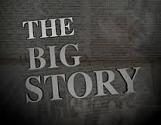
On Apr. 2, 1947 the top-rated crime drama show The Big Story debuts on NBC Radio (until Mar. 23, 1955), sponsored by Pall Mall cigarettes (Lucky Strike cigarettes in 1954-5) and narrated by Robert "Bob" Sloane, dramatizing the lives of newspaper reporters; on Sept. 16, 1949 it debuts on NBC-TV for 349 episodes (until June 28, 1957, then in syndication until 1958).
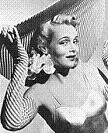
On Apr. 11, 1947 the sitcom My Friend Irma (a ripoff of "My Sister Eileen?") debuts on CBS Radio (until Aug. 23, 1954), about beautiful dumb blonde secy. Irma Peterson (known for whining and crying, and plugging sponsor Swan Soap) and her roommate Jane Stacy, who live in a run-down apt. in Manhattan run by Mrs. O'Reilly; their neighbor is nutty Prof. Kropotkin; her boss is millionaire Richard Rhinelander III, whom she has the hots for; spawns a film (1949), a comic strip (Sept. 11, 1950), and a CBS-TV series on Jan. 8, 1952-June 1954, becoming the first show telecast from their new Television City studios in Hollywood.